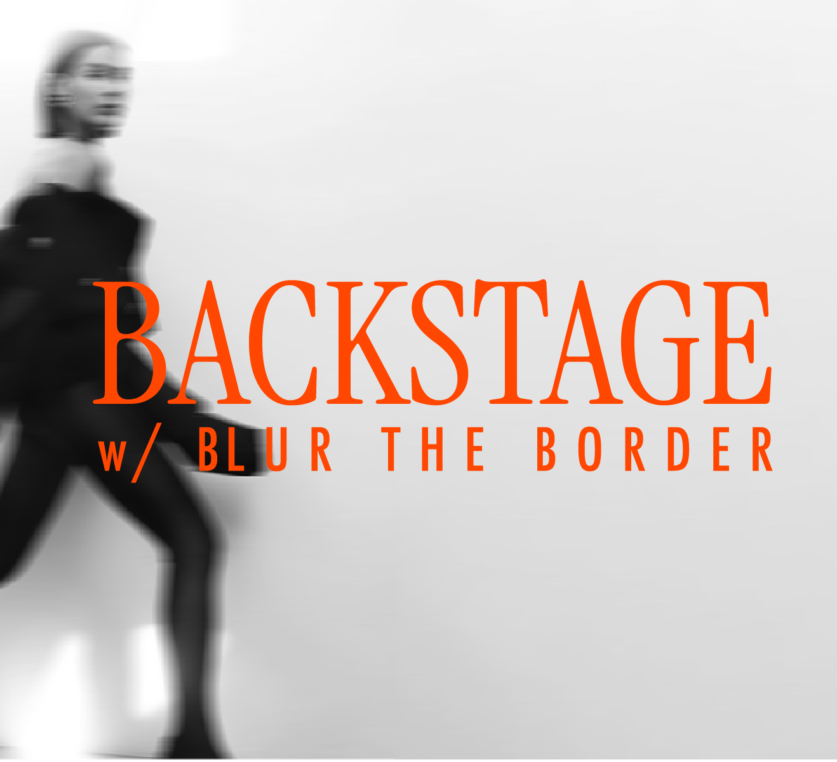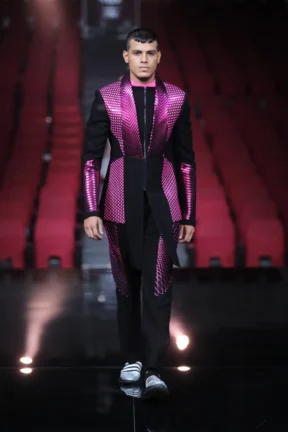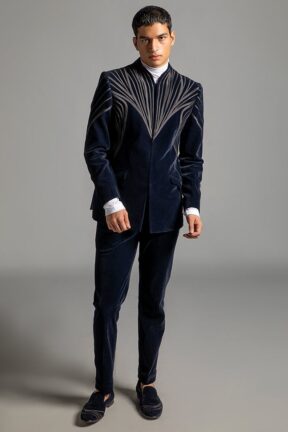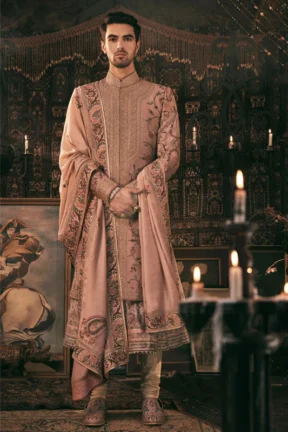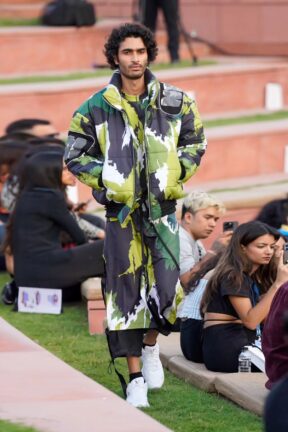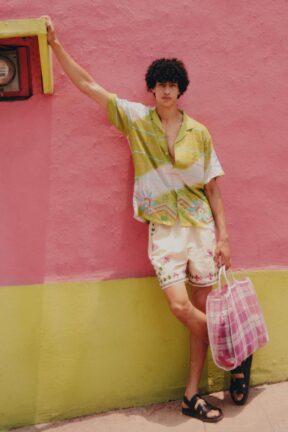The influence of Indian men’s fashion has been marked by Bollywood A-listers but a more experimental approach is only being seen now. A category often seen shuttling between the bare and basic, and occasion wear, homegrown labels are currently giving menswear its long overdue renaissance. In the first season of Backstage with Blur The Border, fashion stylists marked several homegrown names spearheading the change in men’s fashion. Having worked closely with them and curated statement looks for the likes of Shahid Kapoor, Ranveer Singh, Ayushmann Khurrana and more, the stylists discuss the emerging landscape of menswear in India.
The first time Indian menswear witnessed a shift was in the 2000s, defined by designers like Raghavendra Rathore and Rohit Bal who blended traditional aesthetics with contemporary elements. Isha Bhansali, a fashion stylist renowned for curating bold looks for some of Bollywood’s best names notes a more daring and varied shift in the recent decade, especially from homegrown labels. “Menswear has come a long way in the last 10 years. We did have a few labels that have been acing this, but a few womenswear designers have begun to do menswear in no time. Their first drop itself is fantastic. In fact, in the recent fashion week, I loved the menswear shows more than the women's because it's just so refreshing”, says Bhansali.
This phenomenon has also served as an inspiration for several other labels to branch out further. Designers today are evolving beyond their forte and exploring more within the category that was seldom explored. “Gaurav Gupta, Amit Aggarwal, and Rimzim Dadu, who were primarily womenswear designers have now started to make some fantastic tuxedos and suits for men. Rimzim does some gorgeous iterations with the same techniques she uses in her womenswear. This is a revolution and an evolution at the same time”, Isha continues to highlight.
Eka Lakhani, known as one of Bollywood’s most sought-after stylists concurs with this shift, “We recently did something for Karan Johar in Rimple and Harpeet, who are primarily female-centric designers and it worked wonderfully. It was for NMACC and we wanted to put India’s best embroidery out there. I love what they [Rimple and Harpreet] do and I thought it would be lovely to see their embroidery works on a velvet tuxedo. They did a wonderful job by seizing the opportunity and taking Indian Maharajas as their inspiration.” Highlighting a few more names she has curated for Bollywood celebrities, Eka continues to elaborate on a new wave of interest within homegrown labels that are even introducing elements to menswear that were previously limited to womenswear. “I also love Hina Kochhar’s menswear line. We made something for Karan when she wasn't doing menswear. It is beautiful, quirky and fun - has mirror work, tassels, and embroidery patches. You don't see this very often in menswear”, Lakhani concludes.
Additionally, Isha indicates a more noticeable trend in men's fashion. “It's not just the navy blues and greys and whites and black anymore, I am even seeing a lot of pinks and it's not just a certain segment of men buying it. It’s become a worldwide phenomenon”, concludes Isha, explaining that men’s clothing is beginning to shed its traditional form and take a more unconventional route. Meanwhile, Anisha Jain, celebrity stylist to Bollywood’s leading stars including Shahid Kapoor concurs with this shift with a few noteworthy names, “Dhruv Vaish makes great kurtas designs that are not in your face at all - without too many embroideries. Their cuts and colour plays are very interesting. Divyam Mehta is lovely too, I had put Shahid in a black and white tie and dyed kurta from the label, and it looks so different and refreshing”, concludes Jain.
This ripple effect has also amassed homegrown labels parallel to retail - spaces traditionally catering to men's clothing and accessories. Influenced notably by the pandemic, this shift has intrigued men to explore individual styles and eventually prompted labels to inject life not only into dressier looks but also into categories that serve everyday wardrobe. Bhansali discusses a label that had garnered attention as one of India’s coolest menswear designers. “Sahil Aneja creates casual and cool, designs for men. Recently, he has done a fantastic collection with a very underground vibe to it. I even love Countrymade, what Sushant Abrol has done with denim is underrated. They are raw, unwashed and the tailoring is so good.”, says Bhansali. In recent times, a few other brands have started to gain popularity as casual wardrobe favourites. “I love some of the sets that Prxkhxr is doing. I love their shorts and the textures on their garments are good. There’s another brand that I love called I am WIP and I love what Ishita is doing with the brand”, says Anisha.
An upward trend in streetwear has been evident for some time now. A category which has its origins in the West is now emerging as one of the most anticipated and hottest segments in Indian fashion. “Jaywalking is one label that comes to mind, but I also love Nought One and Abhishek Patni, who has been doing streetwear for a long time. In fact, he is one of the first streetwear labels in our country”, says Isha. Brands are also embracing a new masculinity built around self-expression. Once considered primarily for women, this casualisation of menswear has now extended to jewellery. “There are a lot of new drip jewellery labels that are coming up like Drip Project, High Flyer and Zillionaire. They are all cool, badass, funky and contemporary. Amongst others, Eurumme makes some lovely pendants that are doing well. Even Misho’s pieces are very versatile and unisex”, highlights Bhansali, explaining a more fluid approach to masculinity in the Indian fashion space. Anisha too concurs with this. “Misho has a great menswear line and they are doing some fun stuff. Even Shoplune is interesting. Although they dont have a menswear line specifically but its good to see how fluid the designs are”, she says.
Several emerging brands specializing in men's footwear have also surfaced, catering to a wide range of categories spanning from streetwear to formal attire. “I like Shoetic, Escaro Royale and Pelle Santino. They may sound international, but they are all homegrown labels”, notes Bhansali.
Beyond domestic borders, Indian menswear has also embarked on a journey towards international recognition. “Harago and Karu Research are now on major retail platforms including Ssense and Bergdorfs. It is also so cool to see international stylists pick up on such on brand. For example, Harry Lambert uses many pieces from Harago on Harry Styles. Recently, Lewis Hamilton was spotted wearing Karu Research”, says Prayag Menon, an editorial stylist
While it's exciting to witness this, male celebrities in India have been one of the factors in the change and more importantly, stylists who have curated the looks.” I have a muse who lets me do it - and Ayushmann [Khurrana] always did, because he is an artist himself. For him, it's not just clothes and just like me, he also considers fashion as art. Even for Irfan [Khan] sir it was pure art. I still feel no one can carry off a lungi like he did. I styled him in this lovely lungi from Abraham and Thakore and he wore it with a shirt and sandals, and my god, he looked badass!”
With menswear firmly establishing its presence in the Indian fashion landscape, stylists now discuss its future prospects and the next steps. “I feel a little more importance needs to be given to menswear by all kinds of designers, not only the streetwear labels. We can have something like the Pitti Uomo in Italy which is a huge evolution that has happened in menswear specifically. I don't know if that kind of scale is advisable at this level, but it's a start,” says Isha, suggesting ways to enhance the discoverability of menswear labels. Meanwhile, Anisha reflects on this from the perspective of consumers. “Menswear is still evolving and there is still time for everybody to get with it. I don't know a lot of people who would be able to carry the looks that the homegrown labels are making. For that to happen, I believe that men also need to start having that confidence”, concludes Anisha.
